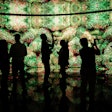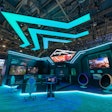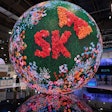Whether you're planning a Chinese New Year bash later this month or hosting an event for a brand that has Asian roots, use these ideas to spark inspiration for your next event. From an origami-like chandelier to a tent with miniature koi ponds, here are 16 ideas for channeling the Far East.
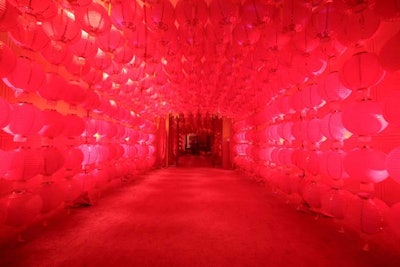
The 2011 event took place at the chancery of the Embassy of the People’s Republic of China. Guests exited the ball through a tunnel of 999 red Chinese lanterns, symbolizing good fortune.
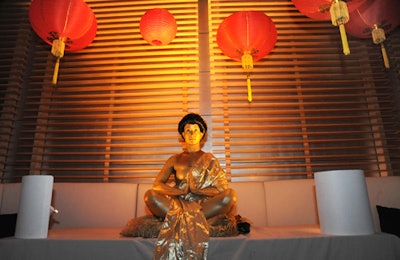
In 2011, the Washington property hosted a Chinese New Year celebration, which included a live Buddha from Cast of Thousands. Painted in gold, the statuesque performer remained silent throughout the course of the evening, holding her pose while offering winks or a cheek for a kiss.
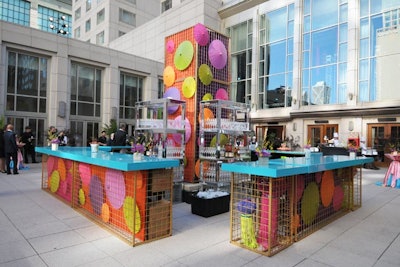
At the 2011 event, the theme on the terrace was "Chinese circus." Paper umbrellas festooned Kehoe Designs' central bar.

On September 30, the New York property celebrated its milestone anniversary with a party for 600 guests. David Beahm Design handled production, giving the event a Chinese-carnival vibe. On the red carpet, a traditional Lion Dance accompanied by drums honored the hotel's Asian heritage.
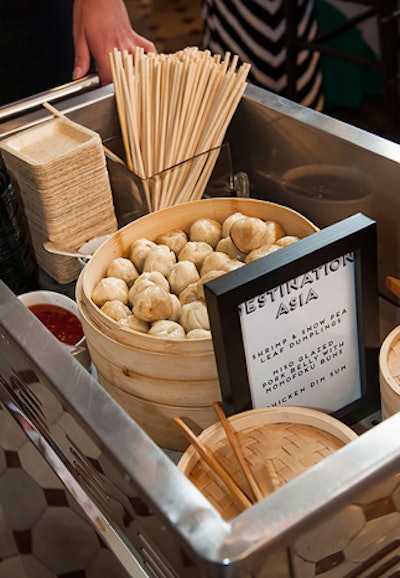
At the summertime event in Washington, a "Destination Asia" cart included shrimp and snow pea leaf dumplings, chicken dim sum, and miso-glazed pork belly with steamed buns.
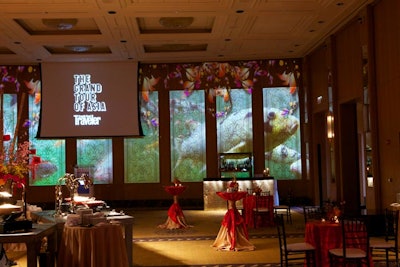
At the event in March 2013, ballroom walls displayed moving projections of a colorful koi pond. The event celebrated Condé Nast Traveler's "Grand Tour of Asia Issue."
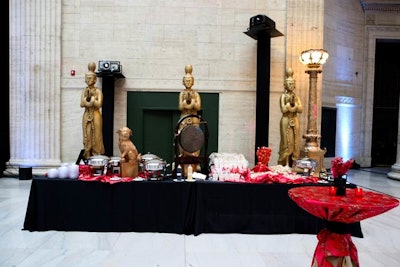
At the 2011 event in Chicago, a Chinatown-inspired food station held egg rolls, potstickers, chicken Kung Pao, and sesame soba noodles. Decor included golden statues and silky red linens with embroidered flowers.
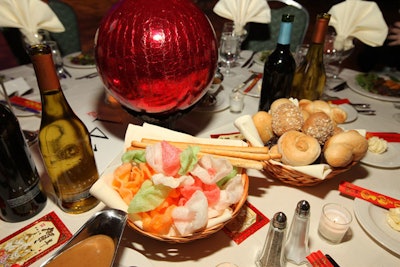
At Marklund's Top Hat ball in 2010, the Chicago Signature Services placed baskets of shrimp chips and sesame breadsticks alongside traditional dinner rolls.

In Toronto, C2 Catering Couture serves sugar bubbles filled with chocolate mousse and a fortune cookie. The dessert is served alongside a hammer to crack open the sphere.

In 2012, Hanami After Dark in Washington raised money for disaster relief in Japan by showcasing a Maguro-Kaitai ceremony, the traditional ritual of breaking down an entire 150-pound tuna for sushi. Master sushi chef Toru Oga of Oga’s Japanese Cuisine in Boston performed the rite, which involves custom-designed knives carefully carving the fish so no part is wasted.

At Diffa's Dining by Design in Chicago in 2012, an origami-like chandelier hung over the CS Interiors table designed by Kaufman Segal with Jesse Chicago. The table also had centerpieces filled with tightly rolled up magazine pages and arrangements of pink and peach roses.
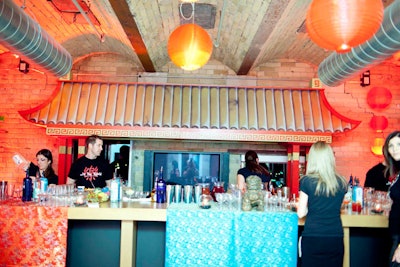
At Capital C's holiday party in Toronto in 2010, a Chinese pagoda provided a backdrop to the bar where servers from the Martini Club offered cocktails with names like the Kublai Khan, Geisha's Pleasure, and Cin Sin.
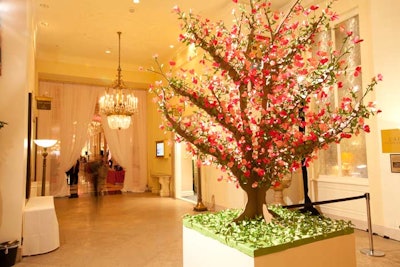
In 2012, the centennial celebration of the National Cherry Blossom Festival—which honors the relationship between Japan and the United States—kicked off with the Pink Tie Party at Washington's Mayflower Renaissance Hotel. A paper cherry blossom tree served as the focal point of the entryway.

In 2008, a Japanese-theme V.I.P. tent was set up at Peacock Park in Coconut Grove for sponsors of the annual Miami Jazz on the Bay concert series to enjoy the music. An arched wooden bridge lined with tropical plants and miniature koi ponds led guests into the space.
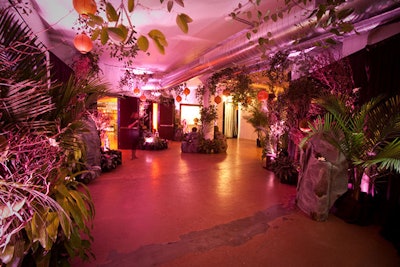
In Chicago, the 2011 launch for Absolut's Wild Tea vodka had an Asian-meets-Nordic theme. Outside the main room, an area filled with vines, Asian lanterns, and palm leaves evoked the setting in the product's creative collateral.

The 2011 event had a color scheme inspired by the robes of Buddhist monks. The saffron, orange, and magenta hues continued in the dinner tent, where Great Performances catered a meal that included a vegan first course.












